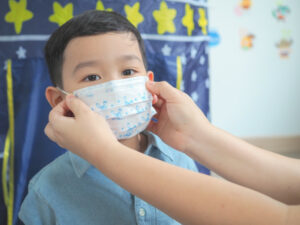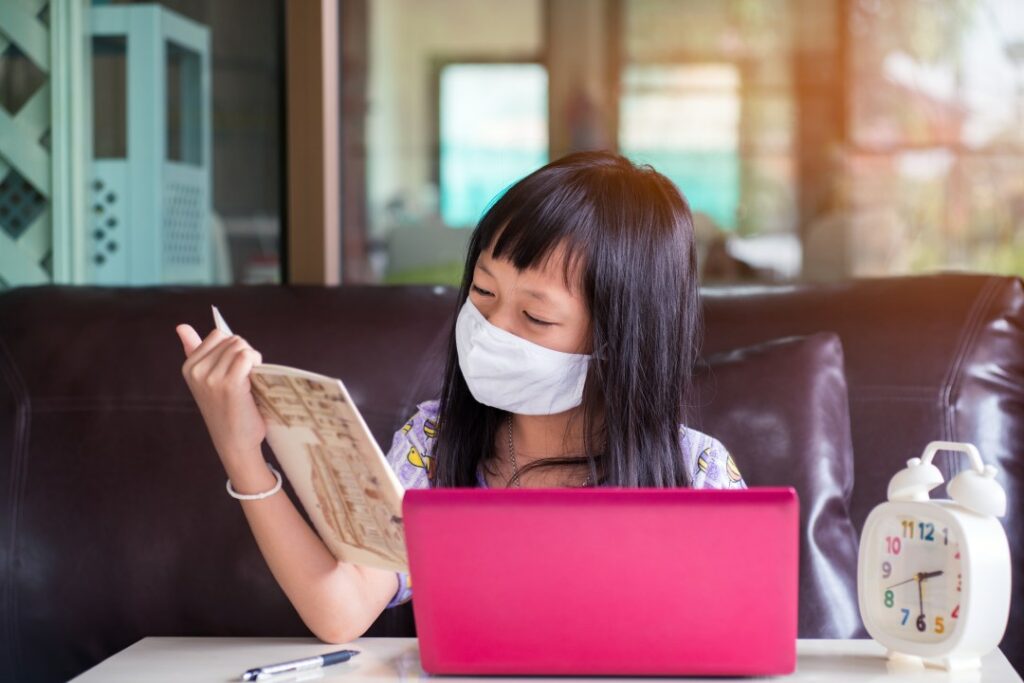Coronavirus lockdown measures have partially or fully closed schools for more than 90% of the world’s student population across 186 countries and territories, according to UNESCO.
Thus far, Vietnam has done a phenomenal job to contain the virus. And after 21 straight days of no domestically transmitted coronavirus infections, many schools across 63 provinces are starting to re-open to welcome millions of school children back to school after the longest Tet holiday in history. However, reopening schools still somehow carries the public health risk of a viral resurgence, which makes parents and teachers understandably wary. How can our education systems respond? What should parents know about, and do, in this situation in order not to let our guard down, but also ensure our children have access to a healthy, safe, and enjoyable learning environment?
As many schools are strictly following instructions from the Ministry of Education and Training and Ministry of Health on practicing good hygiene: sterilize campuses, provide soap and antiseptic hand wash for students, leave windows open and minimize the use of air conditioners…. we want to remind parents of some key actions for COVID-19 prevention and control when sending your child back to school.
1.Know the latest facts
Understand basic information about coronavirus disease (COVID-19), including its symptoms, complications, how it is transmitted and how to prevent transmission. Stay informed about COVID-19 through reputable sources such as UNICEF and WHO and national health ministry advisories. Be aware of fake information/myths that may circulate by word-of-mouth or online. You can regularly check virus updates from the Vietnamese government site’s at https://ncov.moh.gov.vn or install this Vietnamese Health (Sức khỏe Việt Nam) application to access the immediate hotline, and review all the nearest medical centers if an emergency happens.
2. Be aware of the symptoms of COVID-19 (coughing, fever, shortness of breath) in your child.
Seek medical advice by first calling your personal doctor/ nearest health facility and then take your child in, if advised. Remember that symptoms of COVID-19 such as cough or fever can be similar to those of the flu, or the common cold, which are a lot more common. If your child is sick, keep them home from school and notify the school of your child’s absence and symptoms. Request reading and assignments so that students can continue learning while at home. Explain to your child what is happening in simple words and reassure them that they are safe.
 3. Keep children in school when healthy
3. Keep children in school when healthy
If your child isn’t displaying any symptoms such as a fever or cough, it’s best to keep them in school – unless a public health advisory or other relevant warning or official advice has been issued affecting your child’s school. Instead of keeping children out of school, teach them good hand and respiratory hygiene practices for school and elsewhere, like frequent hand washing, wearing masks, covering a cough or sneeze with a flexed elbow or tissue, then throwing away the tissue into a closed bin, and not touching their eyes, mouth or nose if they haven’t properly washed their hands.
4. Teach your kid good hygiene habits
Teaching children how to follow proper health and hygiene is extremely crucial and helps in keeping germs and diseases at bay. Apparently, teachers and parents can not keep an eye on them 24/7, so the most useful approach for kids of any age is reminding them of things that are in their power to protect themselves from getting and spreading illnesses of all kinds. This outbreak offers a great opportunity to teach your kids basic prevention practices:
- Wash hands with soap and safe water frequently, especially before and after eating; after blowing your nose, coughing, or sneezing. Always wash hands with soap and water, if their hands are visibly dirty. For preschoolers, you can teach them to sing a song while washing hands to practice the recommended 20-second duration. (Thanks to coronavirus, the time has come for many new songs to help us properly wash our hands, ask your kids to sing the “ABC song” twice while washing their hands, or do the duo dance of “Ghen Co Vy” – the viral video that helped our country go viral worldwide.)
- If soap and water are not readily available, use an alcohol-based hand sanitizer with at least 60% alcohol.
- Cough and sneeze into a tissue or elbow and avoid touching your face, eyes, mouth, and nose
- Ensure that safe drinking water is available and toilets or latrines are clean and available at home
- Ensure waste is safely collected, stored and disposed of
- If your child brings food to school for lunch or snack, teach her not to leave any food uncovered and also keep the lids clean to avoid contracting bacteria.
 5. Help children cope with the stress
5. Help children cope with the stress
COVID-19 brings with it feelings like anxiety, stress, and uncertainty — and they are felt especially strongly by children of all ages. Children may respond to stress in different ways. Common responses include having difficulties sleeping, bedwetting, having pain in the stomach or head, being anxious, withdrawn, angry, clingy or afraid to be left alone. Respond to children’s reactions in a supportive way and explain to them that they are normal reactions to an abnormal situation.
Listen to their concerns and take time to comfort them and give them affection, reassure them they’re safe and praise them frequently. If possible, create opportunities for children to play and relax. (Steal some ideas from 6 fun indoor activities for kids during Coronavirus outbreak.) Keep regular routines and schedules as much as possible, especially before they go to sleep, or help create new ones in a new environment. Provide age-appropriate facts about what has happened, explain what is going on, and give them clear examples of what they can do to help protect themselves and others from infection.
>> Check out some pointers for keeping kids calm and holding a panic-free conversation about coronavirus: https://blog.e2.com.vn/how-to-talk-to-your-kids-about-the-coronavirus-outbreak/
Share information about what could happen in a reassuring way. For example, if your child is feeling sick and staying at home or the hospital, you could say, “You have to stay at home/at the hospital because it is safer for you and your friends. I know it is hard (maybe scary or even boring) at times, but we need to follow the rules to keep ourselves and others safe. Things will go back to normal soon.”




 3. Keep children in school when healthy
3. Keep children in school when healthy  5. Help children cope with the stress
5. Help children cope with the stress









